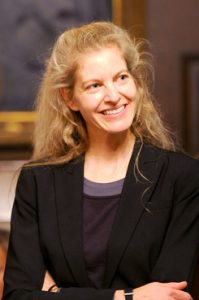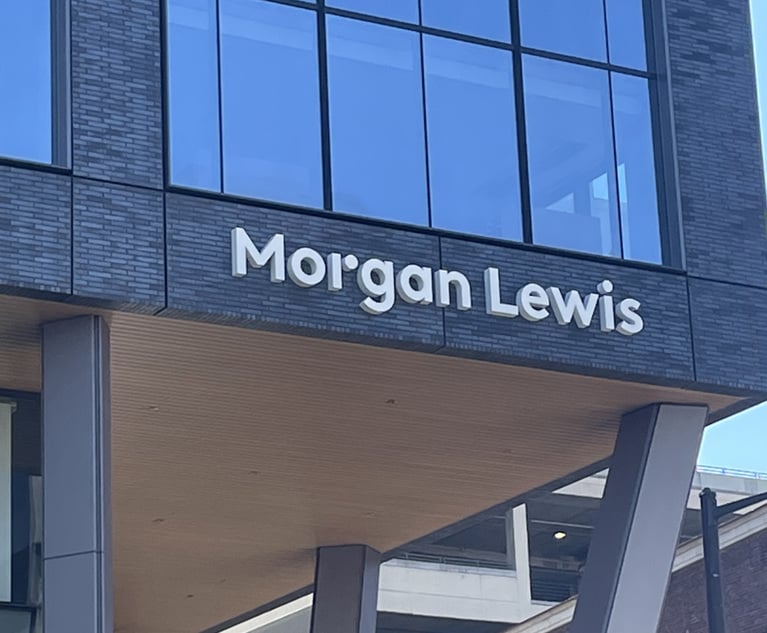Northwestern Law Dean Cites School's 'Difficult Time' as Reason for Faculty Cuts
Dean Kimberly Yuracko is reducing the number of staff, clinical and nontenure-track lecturers in order to cut operating expenses. The move comes under pressure from the university to decrease costs.
November 05, 2018 at 05:10 PM
5 minute read
 Northwestern University Pritzker School of Law.
Northwestern University Pritzker School of Law.
Northwestern University Pritzker School of Law is cutting staff and teaching positions amid a financial shortfall.
Dean Kimberly Yuracko informed the Chicago school's faculty of the downsizing plan and budget problems in a message to its internal listserv, saying the school is in a “challenging financial position.” In an interview Monday, Yuracko, who sent the message to the school's faculty in late September, said that the law school is not in dire financial straits. She said that a directive from the central university to reduce expenses and her new deanship—she took over in September—spurred her to take a close look at how and where the law school was spending its funds.
“The truth is, as a new dean I would have come in anyway and looked closely at our budget and expenses,” Yuracko said. “But I was certainly prompted to do so more quickly and thoroughly because the university told all the units that we needed to reduce expenses.”
Northwestern Law's situation is notable for several reasons. It dispels the notion that elite law schools—Northwestern is ranked No. 11 by U.S. News & World Report—are immune or at least buffered from the fiscal woes that have plagued many law schools since 2010, when enrollment and the national applicant pool shrunk significantly. Second, it demonstrates aggressive fundraising is no cure-all for financial pressures in a fiercely competitive law school environment.
Yuracko declined to detail the amount of the budget shortfall or the number of positions she has cut, but her faculty letter said the school's operating expenses this year are expected to outpace its revenues. The school will draw on its reserves to cover the difference this year, but Yuracko said Northwestern Law needs to make bigger adjustments to bring its expenses in line with revenue for its long-term health.
 Kimberly Yuracko
Kimberly YurackoIn addition to reducing staff, clinical, and lecture positions through eliminating vacant jobs and not renewing certain short-term teaching contracts next year—tenured faculty positions are not under review—the school is increasing the size of its LL.M. class to increase revenue, she said. Affected clinicians and lecturers have been informed that their contracts will end this academic year, she added.
The law school has nearly reached the $250 million goal of its Motion to Lead fundraising campaign launched in 2014 by then-dean Daniel Rodriguez. The single largest chunk of that money came from a $100 million donation from the Pritzker family in 2015, the biggest gift to a law school in history. The school was renamed as a result. But donor funds often come with strings attached, Yuracko wrote in her faculty note.
“I also understand it may be difficult to reconcile internal cost-cutting efforts with our recent fundraising successes,” she wrote. “The law school, along with the university as a whole, is fortunate to have a generous donor community that has allowed us to increase financial aid and begin addressing student debt, among other initiatives. The money raised, however, is typically earmarked for specific uses in line with the donors' wishes and cannot be redirected to operating expenses.”
Rodriguez said in an interview Monday that the bulk of the Pritzker gift, for example, is being used to bolster the school's endowment, meaning it is being invested and not available for immediate use.
“Whether it's a large or small deficit is clearly a matter of perspective,” Rodriguez said of the school's current operating shortfall. “I regard it as a relatively small deficit, but not meaningless. Kim is attentive and attune to ensuring that we don't dig a hole for ourselves that is harder to come out of.”
Yuracko said that no single factor created the budget deficit, and that her chosen course of action is difficult.
“These have not been easy steps to take, especially in regard to our faculty and staff colleagues,” Yuracko wrote. “We are trying to treat impacted individuals with sensitivity and are looking for ways to ease the stress of this transition.”
Some of the cuts affect the law school's Bluhm Clinic, which houses more than 20 separate clinic programs and 14 centers and is among the most comprehensive law school clinical program in the country. The clinic is celebrating its 50th anniversary this year, and is featured in the popular Netflix documentary “Making a Murderer.” (Two professors in the clinic represented convicted murderer Brendan Dassey, the main focus of the series along with his uncle Steven Avery, in his postconviction litigation.)
But Yuracko's review found that some of the clinics offerings were consistently under-enrolled. “What really struck me as I delved into our financial situation is I felt like we were structurally a little bit off, given where our J.D. numbers are,” she said. “We had experienced a lot of growth over the years as our J.D. sizes increased significantly, then they weren't down a little bit. What this felt like to me was rightsizing. It wasn't that our budget was in trouble. But it felt like we weren't spending our money as well as we could and having the best impact for our students.”
Yuracko said she spent the summer before commencing her deanship working with several faculty committees and the central university administrators to determine the law school's options regarding closing the budget deficit. She unveiled her decisions to faculty, staff, and the executive board of the school's Student Bar Association in meetings in September.
This content has been archived. It is available through our partners, LexisNexis® and Bloomberg Law.
To view this content, please continue to their sites.
Not a Lexis Subscriber?
Subscribe Now
Not a Bloomberg Law Subscriber?
Subscribe Now
NOT FOR REPRINT
© 2025 ALM Global, LLC, All Rights Reserved. Request academic re-use from www.copyright.com. All other uses, submit a request to [email protected]. For more information visit Asset & Logo Licensing.
You Might Like
View All
The Right Amount?: Federal Judge Weighs $1.8M Attorney Fee Request with Strip Club's $15K Award

Kline & Specter and Bosworth Resolve Post-Settlement Fighting Ahead of Courtroom Showdown
6 minute read
12-Partner Team 'Surprises' Atlanta Firm’s Leaders With Exit to Launch New Reed Smith Office
4 minute read
Morgan Lewis Shutters Shenzhen Office Less Than Two Years After Launch
Trending Stories
Who Got The Work
J. Brugh Lower of Gibbons has entered an appearance for industrial equipment supplier Devco Corporation in a pending trademark infringement lawsuit. The suit, accusing the defendant of selling knock-off Graco products, was filed Dec. 18 in New Jersey District Court by Rivkin Radler on behalf of Graco Inc. and Graco Minnesota. The case, assigned to U.S. District Judge Zahid N. Quraishi, is 3:24-cv-11294, Graco Inc. et al v. Devco Corporation.
Who Got The Work
Rebecca Maller-Stein and Kent A. Yalowitz of Arnold & Porter Kaye Scholer have entered their appearances for Hanaco Venture Capital and its executives, Lior Prosor and David Frankel, in a pending securities lawsuit. The action, filed on Dec. 24 in New York Southern District Court by Zell, Aron & Co. on behalf of Goldeneye Advisors, accuses the defendants of negligently and fraudulently managing the plaintiff's $1 million investment. The case, assigned to U.S. District Judge Vernon S. Broderick, is 1:24-cv-09918, Goldeneye Advisors, LLC v. Hanaco Venture Capital, Ltd. et al.
Who Got The Work
Attorneys from A&O Shearman has stepped in as defense counsel for Toronto-Dominion Bank and other defendants in a pending securities class action. The suit, filed Dec. 11 in New York Southern District Court by Bleichmar Fonti & Auld, accuses the defendants of concealing the bank's 'pervasive' deficiencies in regards to its compliance with the Bank Secrecy Act and the quality of its anti-money laundering controls. The case, assigned to U.S. District Judge Arun Subramanian, is 1:24-cv-09445, Gonzalez v. The Toronto-Dominion Bank et al.
Who Got The Work
Crown Castle International, a Pennsylvania company providing shared communications infrastructure, has turned to Luke D. Wolf of Gordon Rees Scully Mansukhani to fend off a pending breach-of-contract lawsuit. The court action, filed Nov. 25 in Michigan Eastern District Court by Hooper Hathaway PC on behalf of The Town Residences LLC, accuses Crown Castle of failing to transfer approximately $30,000 in utility payments from T-Mobile in breach of a roof-top lease and assignment agreement. The case, assigned to U.S. District Judge Susan K. Declercq, is 2:24-cv-13131, The Town Residences LLC v. T-Mobile US, Inc. et al.
Who Got The Work
Wilfred P. Coronato and Daniel M. Schwartz of McCarter & English have stepped in as defense counsel to Electrolux Home Products Inc. in a pending product liability lawsuit. The court action, filed Nov. 26 in New York Eastern District Court by Poulos Lopiccolo PC and Nagel Rice LLP on behalf of David Stern, alleges that the defendant's refrigerators’ drawers and shelving repeatedly break and fall apart within months after purchase. The case, assigned to U.S. District Judge Joan M. Azrack, is 2:24-cv-08204, Stern v. Electrolux Home Products, Inc.
Featured Firms
Law Offices of Gary Martin Hays & Associates, P.C.
(470) 294-1674
Law Offices of Mark E. Salomone
(857) 444-6468
Smith & Hassler
(713) 739-1250








